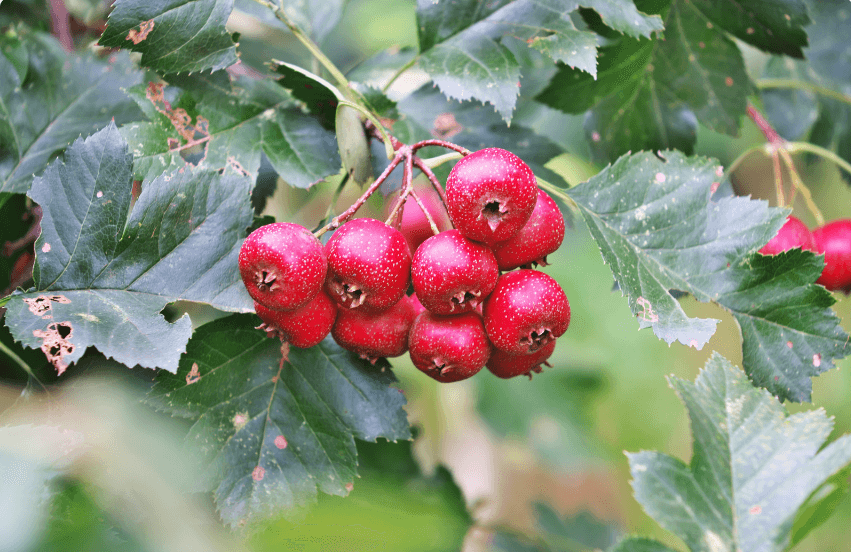
Crataegus
Share

Common Name Hawthorn
Family Name Rosaceae
Parts Used Leaves , Flowers ,Berries
Herbal Actions Cardiotonic, Antihypertensive, Antioxidant, Anti-inflammatory, Digestive Aid
Health Benefits Heart Support, Blood Pressure Regulation, Circulatory Enhancement, Cholesterol Management, Stress Reduction
What are the Benefits of Crataegus?
Bright, deep red Crataegus berries, also known as hawthorn, have been revered for centuries in Europe and Traditional Chinese Medicine (TCM) as a powerful cardiac tonic for the heart, blood vessels, and circulatory system. Energetically, this plant is considered to balance both yin and yang, with a slightly sweet and sour taste and a warming effect upon ingestion. It is a fundamental herb in TCM and European herbal medicine, widely used to enhance cardiovascular health and longevity. Rich in bioflavonoids and polyphenols, Crataegus berries act as potent antioxidants, which help to strengthen the heart and vascular system by enhancing blood flow and reducing arterial inflammation.
Often hailed as a "heart herb," Crataegus is enriched with vitamins B complex and C, as well as minerals such as calcium, magnesium, and potassium. This nutrient profile supports not just cardiac function but also nerve health and energy levels. This is likely why it’s traditionally utilized beyond tinctures and capsules, finding its place in everyday recipes like teas, jellies, and even wines, integrating its health benefits into daily life with ease.
Historical Use of Crataegus
Crataegus, commonly known as hawthorn, has held profound significance among various cultures throughout history, particularly in Europe and in Traditional Chinese Medicine. The ancient Greeks and Romans revered hawthorn for its protective properties and often used it in wedding ceremonies, symbolizing hope and prosperity. In Celtic lore, it was considered sacred, associated with fairy realms and believed to house spirits. This belief was so strong that cutting down a hawthorn tree was considered a serious taboo, thought to bring bad luck.
In Traditional Chinese Medicine, as documented in texts like "Shennong Bencao Jing," hawthorn has been used for thousands of years to improve digestive health, enhance blood circulation, and treat heart ailments. It was commonly used in concoctions to dissolve stagnations of food and invigorate the blood, illustrating its role in both physical and spiritual healing practices.
In medieval Europe, the plant was also part of the "hedge priest's" pharmacopeia, used extensively to create medicines and protective charms against evil spirits. Its wood and leaves were used in various ceremonies and rituals to invoke protection and healing, showing its deep cultural and medicinal significance across different civilizations.
Botanical Description & Habitat
Crataegus, commonly known as hawthorn, is part of the Rosaceae family. It thrives in various soil types, enhancing its wide distribution. Native to temperate regions of North America, Europe, and Asia, hawthorn has a robust root system beneficial to soil stability and ecosystem health.
Identifiable by its thorny branches and clusters of fragrant white or pink flowers, hawthorn attracts many pollinators. Its leaves are generally lobed and glossy, and its fruits, known as haws, turn red when ripe, providing food for wildlife and having medicinal uses.
